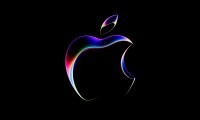
In addition to discussing OSX Lion and iOS 5 today at Apple’s WWDC, Steve Jobs announced that Apple will once again make a foray into cloud storage with a new service called iCloud. The idea is that the new service will seamlessly push user content like music, photos, and documents from the original source (theoretically a Mac or PC) to all of the user’s other iOS devices. With iPhones and iPads becoming almost as common as phones and computers themselves, Apple realizes that it’s now common for users to have all of their content on a home computer without an easy way to get it to their other devices. Jobs noted that the notion of having a home computer as a digital hub for content will soon be outdated. The new hub will be in the cloud, where content can be easily accessed from any of several devices. Apple took a shot at cloud service with MobileMe, but it was generally considered a failure and also cost users $99 per year. Now, Apple has revamped its approach and is offering the content-syncing service for free. Jobs reviewed all the specs in his announcement today, but we’ve got all the details you will need to know as a user looking into the iCloud service.
Jobs boasted today that the best thing about the iCloud service is that it works without any hassle for the user. Content will be stored in the cloud and transparently and wirelessly pushed to all devices. The service will be integrated with apps as well, meaning that all synchronization will be automatic. The free service will also offer daily backups, via Wi-Fi, of important data like photos, music, apps, and books. We’ve broken iCloud down into categories to show you how the service will work with your various forms of content.
Data, apps, and documents
Like MobileMe before it, iCloud will offer easy syncing of basic data like contacts, calendars, and email. Everything in those categories will be synced automatically with no effort by the user. iCloud users will also be able to look at a list of every app users have ever purchased, and then tap to download the app again to any of their devices, free of charge. In the future, apps will automatically download to all devices. Until then, the same system will apply to iBooks, including bookmarks and last-read page markers. Documents will also be available in the cloud. Anything created in Pages or Keynote will automatically be shared across devices, meaning that users will no longer have to worry about physically transferring that document from their home computers to their iPads.
Photos
A new app called Photo Stream will keep photos synchronized across devices along with iCloud. Take a photo on your iPhone and it will automatically be downloaded to your computer and iPad. This feature is built-in to the photo app, meaning that users don’t have anything new to learn to make sure their photos are syncing. The photos will be accessible from your Apple TV, too. Your photos will even show up on your PC. Photos will be directly downloaded to the My Photos folder on PCs.
Music
Perhaps the most important part of the iCloud announcement today was hearing how Apple would integrate iTunes with the cloud. As expected, any songs purchased in iTunes will be available to download on any iOS devices. This syncing won’t be automatic, but it’s probably a plus to leave users some control when dealing with large music libraries. However, Jobs noted it as an advancement in the music industry as it’s the first time record labels have allowed users to download the same album on multiple devices with no extra charge. When new music is purchased through iTunes, users will have the option to have the songs automatically available on all devices.
The other important question that users will have is whether iCloud will be able to handle and store songs that weren’t purchased through iTunes. Luckily for all music lovers, the answer is yes, in some form or another. For songs that have been ripped from CDs or downloaded somewhere other than iTunes, users will have two options. The most significant option is the new iTunes Match, which will scan the non-iTunes-downloaded songs in your library and attempt to find a match for each song in the iTunes store. As long as there is a match to the song, iCloud will treat the song as if you downloaded it from the iTunes store originally, giving you all the benefits of the song within iCloud. The iTunes Match service, which should allow users to have full access to their entire music libraries in iCloud (without any slow uploading process), will cost $25 per year. If there is no match to a song in the iTunes store, or if users don’t want to fork over the $25 per year, songs can be uploaded to the cloud manually. Songs matched with iTunes Match will also be upgraded to a 256 Kbps DRM-free AAC format.
Conclusion
We will have to wait until we can get our hands on the full iCloud service before making a full judgment, but it sounds like Apple is headed in the right direction with the announcement of iCloud. Apple clearly wants users to have a full suite of products at home: iPhone, iPad, Mac, so it makes sense that they would create a service that would allow users to move seamlessly from one device to another. This service makes it clear that Apple is moving forward with the assumption that users will want to have their ‘hub’ of data in the cloud instead of on their home computer. We think this is a safe assumption that will make iCloud a success, even if it takes consumers a little while to fully catch up to the idea.
You can now watch the WWDC Keynote on Apple’s website to learn more about iCloud, iOS 5 and OSx Lion.


